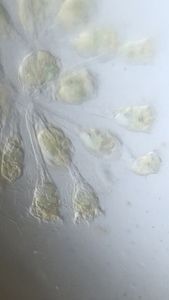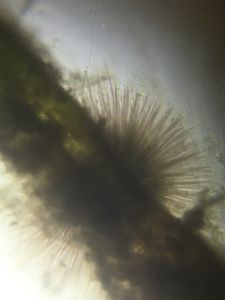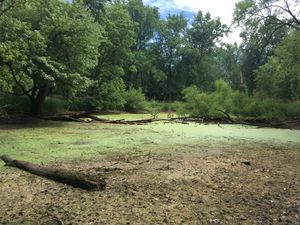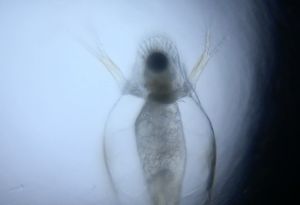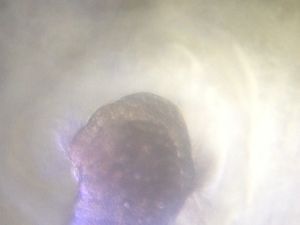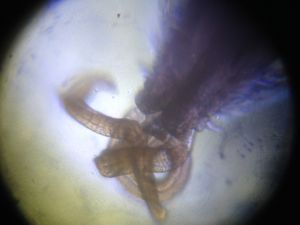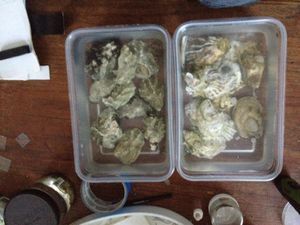In the Surf
 Jul 19, 2016 • 2:42 PM UTC
Jul 19, 2016 • 2:42 PM UTC Unknown Location
Unknown Location 140x Magnification
140x Magnification Unknown
Unknown
Matthew Rossi
I'm a novelist, essayist, and a writing consultant. I work in the writing centers at Columbia and Baruch University and explore research into the overlap of maker cultures and writing. My work with the Foldscope tends to focus on finding wild creatures in urban spaces and looking at how human works are shaped by the movements of the biosphere.
40posts
105comments
4locations
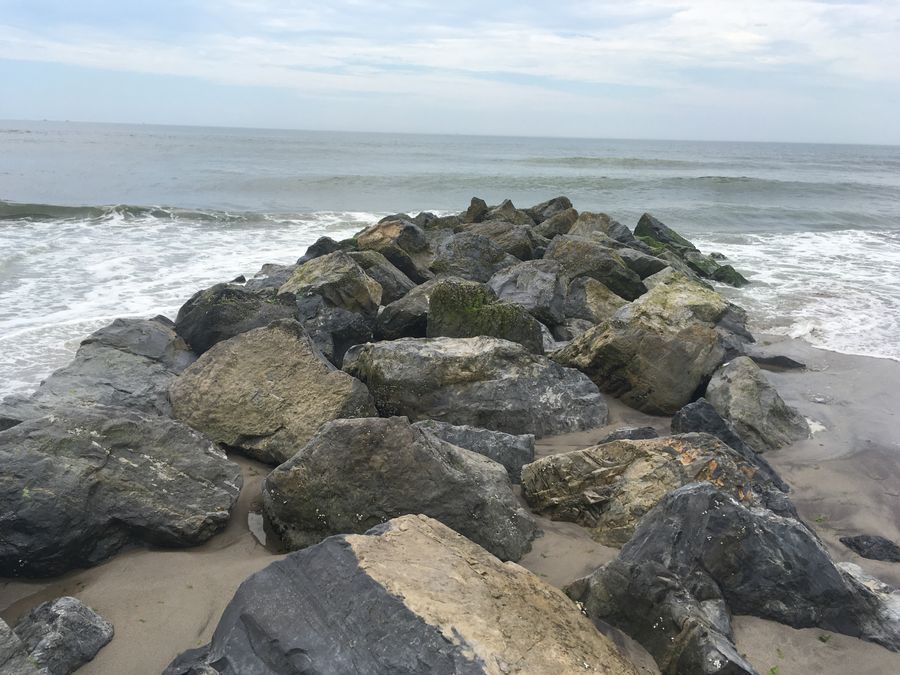
As summer days get hotter in NYC, I’ve been less interested in sitting out in the sun and dropping a net in the water, and much more interested in jumping into the water myself. This raised an interesting question for me. Is there a way to use my plankton net in the surf, since the net needs a current to work (and the surf only provides a circular, bobbing motion. On a recent 90º F day, I decided to test this at Fort Tilden park in Queens.
This also gave me a chance to test a hypothesis that Laksiyer proposed earlier this year: that depending on where I did my plankton tow, I would catch different creatures.
A first run of the net gave me not much of anything. To work it, I walked it out into the surf and let it bob in the waves while I kind of floated myself back and forth. This led to a fairly good bit of exercise for me, but a less good plankton run. I caught a lot of sand and not much else. Changing my place on the beach, I then found a spot where tiny clams were thriving in the sand. Since clams are filter feeders, I reasoned there must be creatures swimming in the water for them to feed on.
This time, I didn’t float, but wave surfed, dragging the mouth of the net against the direction of the waves. I also kept it higher up, so the sand would be less of a problem. And this is what I found when I emptied the bottle.
This also gave me a chance to test a hypothesis that Laksiyer proposed earlier this year: that depending on where I did my plankton tow, I would catch different creatures.
A first run of the net gave me not much of anything. To work it, I walked it out into the surf and let it bob in the waves while I kind of floated myself back and forth. This led to a fairly good bit of exercise for me, but a less good plankton run. I caught a lot of sand and not much else. Changing my place on the beach, I then found a spot where tiny clams were thriving in the sand. Since clams are filter feeders, I reasoned there must be creatures swimming in the water for them to feed on.
This time, I didn’t float, but wave surfed, dragging the mouth of the net against the direction of the waves. I also kept it higher up, so the sand would be less of a problem. And this is what I found when I emptied the bottle.
In some ways, molecrab zoea are the most obvious things I could find in the surf. As kids, my brother and I used to love racing to dig them out as they burrowed into the surf. We loved to catch the adults from their holes in the sand and inspect their tawny beige carcasses when they washed up on shore. They’re the first creature I can remember finding at the beach. So it makes sense their young would be swimming in the water around where they live and naturally mate.
A little slow motion helps us see how it is moving:
A little slow motion helps us see how it is moving:
I’m increasingly a fan of the way that slow motion videos aid in seeing the movements of microscopic creatures, which seem to exist at about four times the pace of the rest of the world.
It also answers to some extent the question Laksiyer posed to me. Are there significant differences between the plankton in the ocean versus the intertidal? At the very least, the answer seems to be yes, there is some difference. This further fuels my desire to head out to the deeper water of the ocean and see what a drag in the pelagic zone will catch me.
It also answers to some extent the question Laksiyer posed to me. Are there significant differences between the plankton in the ocean versus the intertidal? At the very least, the answer seems to be yes, there is some difference. This further fuels my desire to head out to the deeper water of the ocean and see what a drag in the pelagic zone will catch me.
Sign in to commentNobody has commented yet... Share your thoughts with the author and start the discussion!

 0 Applause
0 Applause 0 Comments
0 Comments




